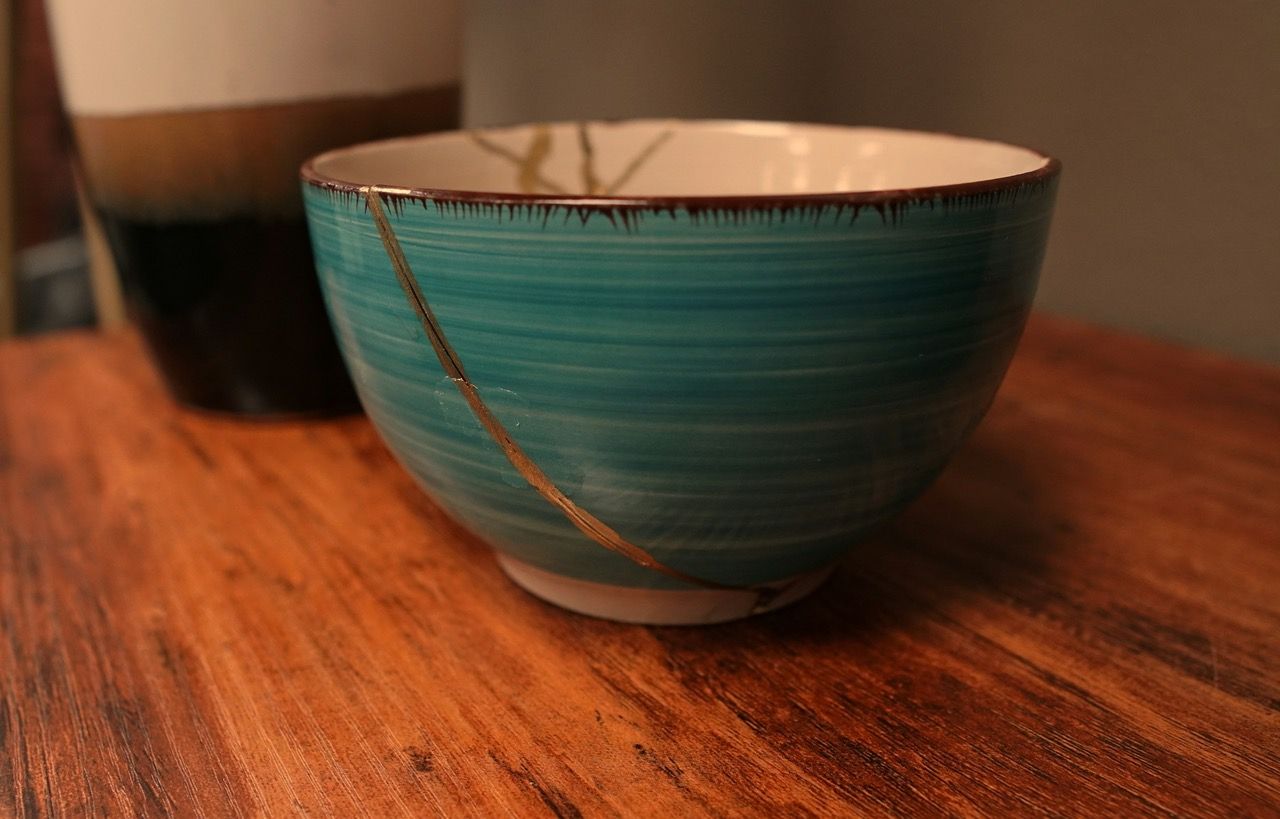Kintsugi – hands-on mending with gold

My finger was broken. I just didn’t know it yet.
It happened during a neighborhood game of freeze tag on a hot summer day when I was eleven. As I reached out to freeze someone into a block of ice, they kicked my outstretched hand, and my ring finger took the brunt of their heel. I felt the zing all the way to my elbow. By dinnertime, my finger was bruised, swollen, throbbing.
Thinking it was only jammed and would heal with time, we didn’t go to the doctor. A week later, when I still could not straighten it, we went to the pediatrician. He put my curled finger into a splint to straighten it out, slowly and painfully. Today, that finger is rigid and misshapen at the knuckle. I cannot wear a ring, but it works well enough to write, carry things and hold hands.
Now, I realize my finger could have used more attention and sooner - an x-ray, a cast, followed by physical therapy. Anything that might have acknowledged my finger as broken or at least, fractured, might have given me opportunity for a proper bone setting and healing. Doctors have since said my body did its best to heal by calcifying at the knuckle joint to protect the injury.
Something similar happens with our relational fractures. When our heartbreaks are left unattended, we learn to protect ourselves - but we don’t truly heal completely.
Writer and psychiatrist Curt Thompson writes,
Unrepaired ruptures don’t just fade - they settle in.
We either shrink them to avoid pain or expand them to justify it.
Curt Thompson, MD
When it comes to relationships, I hope for a very different kind of repair. I want kintsugi.
Kintsugi is the ancient Japanese art of repairing broken pottery with glue and gold. It began as a labor of love for repairing historic tea ceremony cups. The heart behind kintsugi is not ignoring cracks and breaks but making them stronger, even calling them out as beautiful scars.
On a rainy Sunday after church, I participated in a modern kintsugi workshop where we gathered around a table with our broken vessels – bowls, cups, plates and planters – and practiced this artful mending. We first set the breaks with glue before mixing urushi (in our case, a cashew paste) with gold powder to paint the cracks. Much of our time was waiting, holding the pieces together as glue dried. Some repairs, either because of the pottery material or angle of the break, took a long time to set. We got frustrated. We took pieces apart, sandpapered the edges, and tried again. This resilience is a natural part of the art of kintsugi.
As we waited for our repairs to take hold, we named our ruptures in need of repair: marriages, parenting, friendships, health, neighborhoods, lands, places of work, churches, communication and trust, war-torn countries, news, politics, and global relationships.
I named a few broken places for myself –
a word I could have spoken kindly,
a harsh tone of voice,
speaking when I could have listened,
forgiveness given begrudgingly or withheld all together,
particular people and places I love and know are fractured.
On this day, I held one broken relationship in my hands as I worked.
Honestly, naming our brokenness was overwhelming at first. Yet with gentle practice and generous silence came relief, knowing precisely what brokenness we were carrying. Holding our broken bits long enough to set the repair gave us time for reflection.
As we painted gold into the joints, our pieces began to show their beautiful scars. That’s when hope began to set in. I felt the shift in the room even before the sun poured through the corner windows.
Though naming our brokenness personally and in community is vital, the art of kintsugi goes deeper, including what we mix into the repair. We need glue, gold and grace. Poetic mending requires qualities that need remembering and refinement like patience, wisdom, and humility. We remember the original imprint of our loving God and the work he began in us, poetry he is faithful to create in us to its fullness.
I made a list of golden qualities I wanted mixed into my repair: patience, love, humility, mercy, peace, generosity, thanksgiving, goodness, tender forgiveness, faithfulness, honesty, joy, and beauty.
The mending process took reflection, self-control, and deep grace. Writer and pastor Brian Zahnd challenges us to look deeper into grace,
“When we look through the riven side of Christ into the heart of God, we gaze upon a vast cosmos filled with galaxies of grace.”
Brian Zahnd
Kintsugi is the kind of poetic mending God intends for us. This artful repair includes naming our breaks, holding the mend with patience and perseverance in the presence of others, and looking through the beautiful scars of Jesus to see God’s vast grace. Even more, kintsugi is a hands-on repair.
The way that I know my wounds are healed is by virtue of Jesus taking my hand and putting it into his wound.
Curt Thompson, MD
When Jesus takes our hand and we let him, he invites us to explore and participate in his wounds and God’s grace. Hands-on mending is always in season.
But Lent is particularly suited to mending by Jesus’ wounds.
Jesus, take our hand,
that we might feel your riven wounds
and flowing love.
Give us courage to face what is broken
in our hearts and between us.
Mend our relationships
with your gold, bright and beautiful.
May it be so.

Is a writer, spiritual director, creative space-maker, and occasional preacher. Terri has a BA in Architecture from the University of Texas at Austin and a MA in Spiritual Formation with an emphasis on Spiritual Direction from Portland Seminary. Additionally, she is a Certified Spiritual Director, also from Portland Seminary.
Terri has always been fascinated with design and the spaces that shape us. First, she explored space in physical spaces: textures, light, and materials like wood, stone, glass, and garden. Then, she was drawn to the spiritual spaces within and between us and our Artist God. In bringing the two together, we can discover delightful possibilities for the shapes of our souls.
Terri is a homebody who enjoys scenic hiking, reading, design, poetry, and writing while sipping dark roast coffee in a thrifted mug. A bunch of handpicked wildflowers in a mason jar or ironstone pitcher make her smile.

